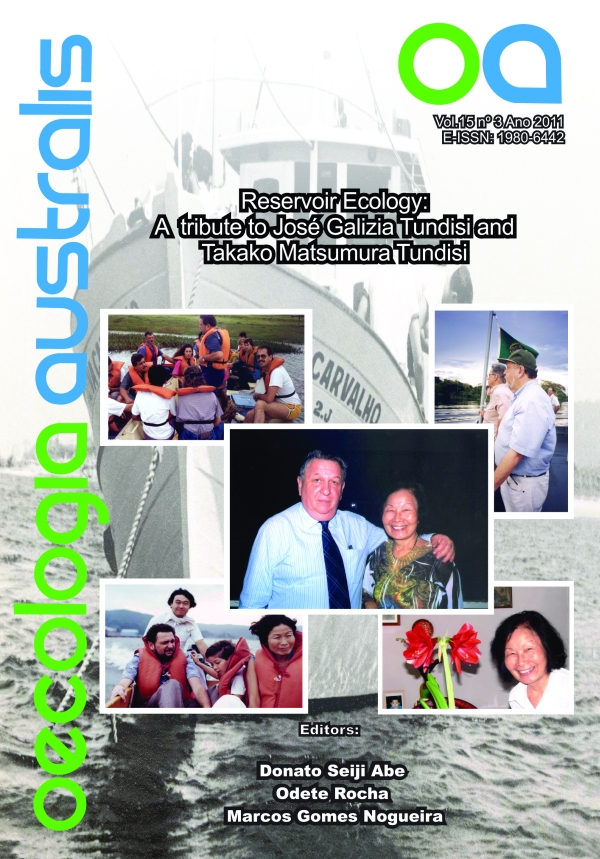ZOOPLANKTON DYNAMICS IN A EUTROPHIC URBAN RESERVOIR: FOUR SCENARIOS OVER A HYDROLOGICAL CYCLE
Keywords:
Urban Reservoir, eutrophication, zooplankton, cyanobacteria bloom, hydrological cycleAbstract
The Ibirité reservoir, built in the 1960's in order to attend the Petrobras water demand, receives untreated wastewater, which results in a process of eutrophication, with periodic cyanobacterial blooms. The present study describes the zooplankton community of the Ibirité reservoir in terms of richness, composition and abundance throughout a complete hydrological cycle (Oct/2007 to Oct/2008), and considering some environmental variables. Four scenarios, with different environmental conditions that reflected in the zooplankton community structure were identified and described with the aid of analysis ordination (DCA and CCA) and variance: Scenario 0 -characterized by the onset of the rainy season (summer) (Oct/2007 and 2008), a period of high temperatures, high relative water column stability and apex of cyanobacterial blooms. In this scenario, the zooplankton was dominated by rotifer Brachionus calyciflorus.-Scenario 1 (Dec/2007, Feb and Apr/2008) -the rainy season apex and collapse of the cyanobacterial bloom by dilution. A reduction in the abundance of rotifers and nauplii (microzooplankton) was recorded in this period as a consequence of dilution and flushing these organisms through the spillway. -Scenario 2 (Jun/2008) -refers to the dry season, during which the reservoir had a low stability of the water column and no cyanobacterial bloom. In this period we registered the highest values of species richness and abundance, mainly rotifers and cladocerans. This can be explained by an hydrodynamic instability favoring r-strategists (e.g. rotifers) and reduction of predation pressure by vertebrates as consequence of fish mortality has occurred during this period. -Scenario 3 (Aug/2008), which represented the transition between the dry (winter) and rainy (summer) seasons, found the reservoir partially stratified, with the onset of algal bloom. In this period, the presence of the invasive rotifer Kellicottia bostoniensis was recorded for the first time in Ibirité reservoir.


